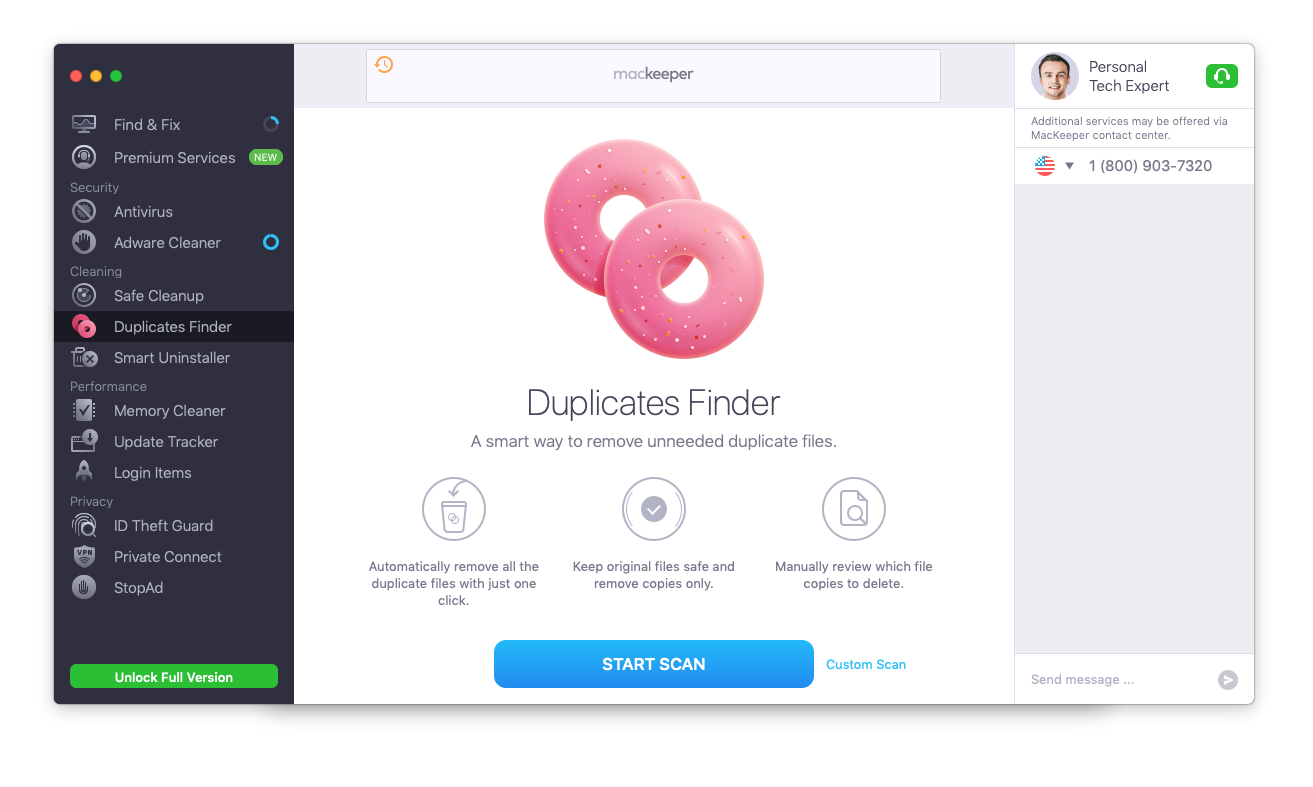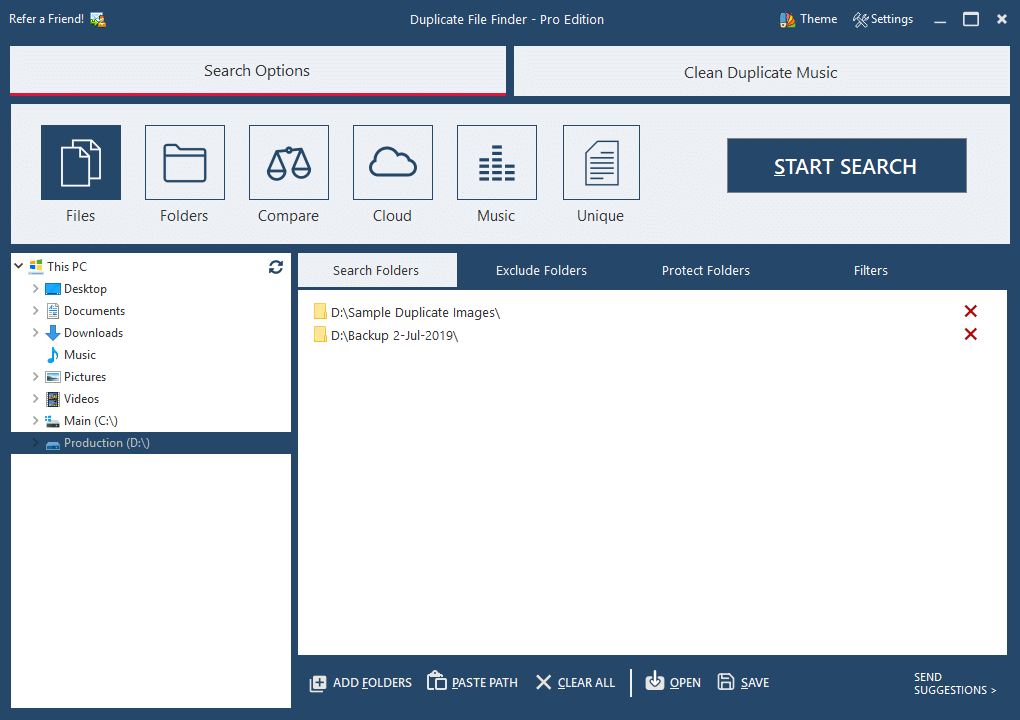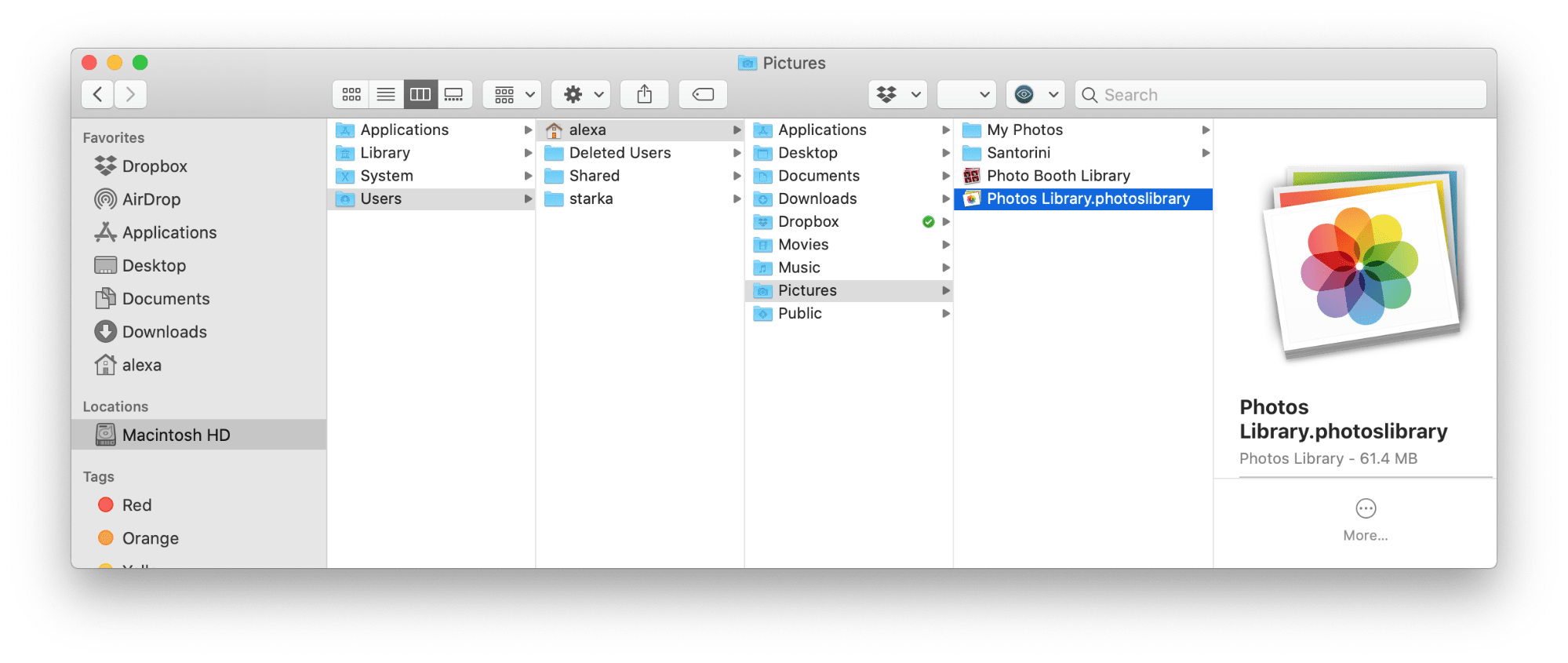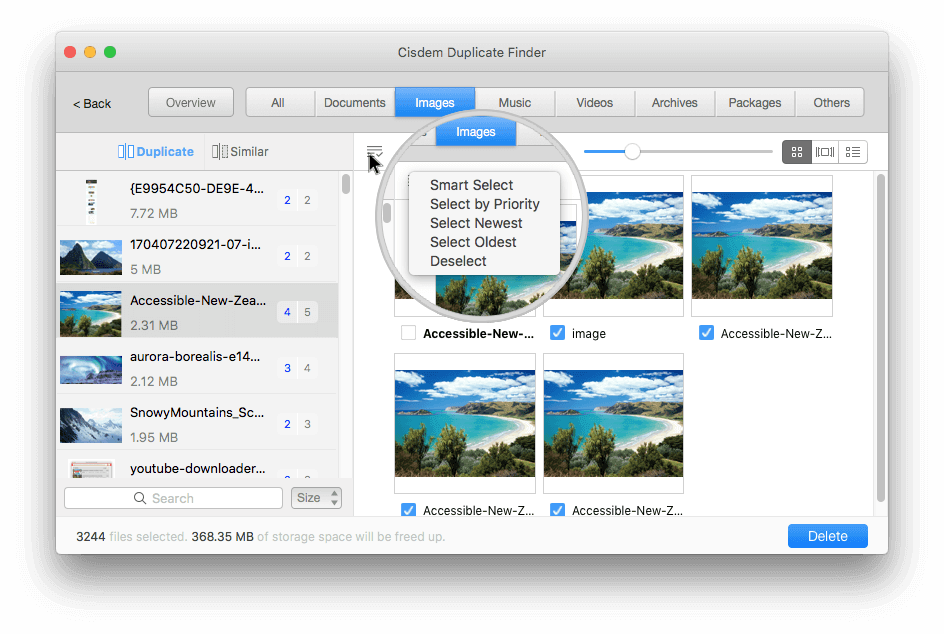How to find and remove duplicate files automatically. An effective and time-saving solution to find duplicates on Mac is to use a free application Duplicate File Finder.The application has a complex search algorithm that automatically identifies exact duplicate photos, videos, music, documents, and other common types of files. No.3 dupeGuru - Best Free Mac Duplicate File Finder and Remover. DupeGuru is advertised as free (donationware) duplicate finders for Mac. It is a lightweight duplicate finding tool that's great for not only finding duplicates with the same file names, but even those with variations. This is accomplished by its fuzzy matching algorithm. It’s a duplicate file and folder finder that can scan your Mac’s hard drive, removable media, and network volumes – pretty much anything you can mount in Finder. Developed by MacPaw, the makers of CleanMyMac, Gemini is available exclusively on the Mac App Store ($9.99) for systems running 10.7 Lion. Using Finder to Find and Delete Duplicate Mac Files If you would rather avoid installing a third-party app, use Finder to find and delete duplicate Mac files instead. This method is incredibly time-consuming and can lead to more mistakes, but it doesn’t risk your security.

A new Mac application called Gemini is looking to get some of your hard drive space back. By identifying duplicate files and folders on your Mac, Gemini helps you delete unnecessary clutter you didn’t even know you had.
How To Find Duplicate Files On Mac Free App
It’s surprising how often we make copies of files and folders on our computers only to let them sit and go unnoticed for years at a time. Then when our hard drives start to get dangerously close to full capacity, we frantically go searching for data we can purge in order to free up some space. Gemini is a new application that aims to take care of this problem for us. It’s a duplicate file and folder finder that can scan your Mac’s hard drive, removable media, and network volumes – pretty much anything you can mount in Finder. Developed by MacPaw, the makers of CleanMyMac, Gemini is available exclusively on the Mac App Store ($9.99) for systems running 10.7 Lion.
How it works
Gemini is not a multi-purpose application – it serves one purpose and stays focused on that task. The result is an extremely simple and intuitive interface for finding duplicate files and folders on your Mac. To get started, all you have to do is drag & drop a folder from Finder right into the Gemini window. It will take a few moments to analyze the folder depending on its size, but this is generally a quick process.
When the scan is done and you click through to the results, a 3-column window is displayed. The left column shows a breakdown of files types (such as Pictures, Documents, Movies, etc.) along with a graph that illustrates how much space each one is using. You can filter the list of results in the middle column by selecting a file or folder type. Each duplicated file is displayed with an indicator of how many copies were found and their combined file size. When you click one, the right column shows a preview of the file, where each instance is located on your Mac, and the modified date.
To remove files or folders, just check the box next to each of them. This adds them to a queue, so nothing really happens until you click the red “Remove Selected” button at the top. Once you click, it confirms exactly what will be removed and warns you so you don’t accidentally delete all copies of a file. When you give the final command to get rid of the listed items, it “shreds” them and moves them to the Trash. You’ll have to empty the Trash to get rid of those files for good.

Impressions & Notes
Gemini works really well and helps focus your attention on what’s taking up the most unnecessary space on your Mac. It makes what used to be a laborious task much more efficient. Best of all, I saved over 5GB in my Documents folder alone!
A big selling point for Gemini is the “Auto Select All Files” function, which uses an intelligent algorithm to decide which files to remove. While this may sound like a huge time saver, leaving your data to an algorithm’s judgement can be risky. When it comes to deleting your data, only you know what is safe to remove and what isn’t. My personal recommendation is to use Gemini as a helpful duplicate discovery tool, not an automated cleaner.
Overall, Gemini is a handy utility with an easy to understand interface. It’s very good at what it does and will certainly benefit any Mac user who is looking to clean up the clutter and regain hard drive space. Gemini is available on the Mac App Store for $9.99.
Win a free copy of Gemini for Mac!
The developers of Gemini have been kind enough to offer free software licenses to TWO (2) lucky MacYourself readers! In fact, the giveaway is open to any Twitter user! To enter, simply follow @macpaw and @macyourself on Twitter, then tweet this message:
@macyourself @macpaw I want to win a free copy of #GeminiApp for Mac! http://bit.ly/xWWGGK

All entries must be made by February 24, 2012 at 11:59pm eastern U.S. time. At the end, we’ll gather all of your tweets and pick two winners at random! The lucky guys or girls will be announced on this page, so save this article’s URL and be sure to check back later. In the meantime, check out Gemini on the Mac App Store to learn more about how it works. Good luck!
How To Find Duplicate Files On Mac Free Software

UPDATE – February 25, 2012:
Congratulations to our winners, @tashanzac and @marcoutsider! Their tweets were randomly selected and they have each been given a free copy of Gemini for Mac! Thanks to everyone who entered and remember to consider purchasing a copy of Gemini on the Mac App Store.
You can easily have multiple duplicate files without you even realizing it. Duplicate files are not noticeable as they create themselves as you go. It’s only at a later stage that they seem to have taken over the system. By the time you notice them, your Mac will be riddled with so many duplicate files, causing it to run low on storage.
For the everyday macOS consumer, the thought of finding duplicate files is a rare occurrence. Fortunately, finding duplicate files isn’t rocket science. After a while, the Mac storage system starts filling up with the entire collection of files and folders. Usually, before modifying any large media file, users duplicate it. Such duplicates are then left around unattended. Over time, they occupy such a large portion of the macOS they cause serious system lags.
Despite that, deleting and getting rid of duplicate files can be easy. Since not all file duplicates are visibly displayed on the screen, it becomes necessary to find them manually. Use smart folders to find duplicates files and get rid of them to clear your system.
Best Mac Duplicate File Finder
Using Smart Folders to Find and Delete Duplicate Files on Mac
Finding all duplicate files that are occupying your space is rather simple. If you want the process to be easy, then follow the steps outlined:
Pro Tip: Scan your Mac for performance issues, junk files, harmful apps, and security threats
that can cause system issues or slow performance.

Special offer. About Outbyte, uninstall instructions, EULA, Privacy Policy.
- Go to your Mac’s desktop and under the menu bar, click on File.
- A drop-down menu will appear. Select New Smart Folder from the list of options.
- A new window will open. Under the new window, locate and click on the ‘+’ icon next to the Save option.
- Narrow down your search for duplicate files by selecting the Kind drop-down menu, then click on the file type you want to start with.
- Starting with the selected file type, thoroughly go over all the files that are stored on your macOS. Scroll through the file, one grid after the other until you find the duplicate files that interest you, then delete. Organize files by their name such that duplicates are replicated under the original and they are easier to identify then delete.
- Do a double-take to confirm that you’re deleting duplicates before proceeding. Quickly select Get Info and check the information on each file. Alternatively, you can opt to open both the original and what appears to be the duplicate then manually compare the contents. Go through all the sections including Pictures, Downloads, Documents, Music, Desktop, Videos etc.
- Right-click on a duplicate file and select Move to Bin/Trash to remove it from your Mac. After deleting, go to your Trash Bin and review. If you’re certain that deleted files are duplicates and what you wanted to delete, then right-click on the Trash Bin and permanently remove the files.
- Your Mac will be rid of duplicated and unwanted files leaving you with so much free space for new and necessary files.
Now you know how to find and delete duplicate files on mac with smart folders. Using this simple built-in feature on your macOS only requires your time and concentration. Even so, you can still use other programs to find duplicate files on your system.
How to Find Duplicate Files on Mac Using Third-Party Finders
In addition to Smart Folders, there are means of finding these unnecessary files on your system. These are apps found on the App Store and available for every Mac user to select and use as they see fit. Some third-party duplicate file finders for Mac are more thorough and thus churn out better results than Smart Folders. So, they might be worth your while.
Although there are many utilities out there that promise to find duplicate files and leave your Mac system clean, there are a few that live up to the end of their deal. Therefore, it’s important to choose wisely when opting for a third-party finder software.
How To Delete Duplicates Mac
How to Remove ‘Other’ Data on Your Mac
Mastering how to use Smart Folders on a Mac is only complete if you also know how to remove the ‘other’ data. Even if you identify and delete duplicate files, if you leave ‘other’ data, then your macOS storage is still riddled with unnecessary loads. Periodically check your Mac for unwanted files and remove them to keep the system light and free.
How To Find Duplicate Files On Mac Free Download
If you want a permanent and more sustainable solution. Then consider using iCloud. Move most pictures, music and video files to the cloud. You can always access them from any Mac as long as you log in. This option leaves you with enough room to do as you please and at the same time, keep your Mac clear and clean of duplicate files and memory occupiers.